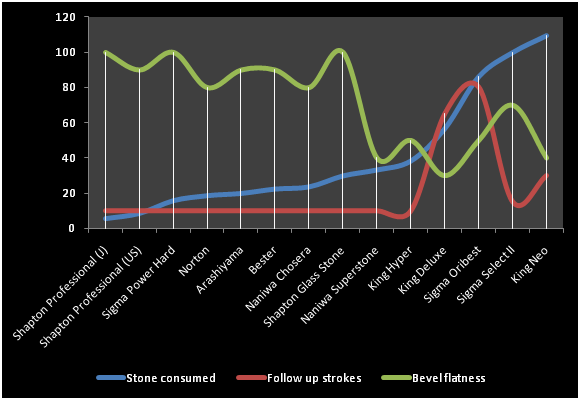It may surprise some but a lot of Japanese don't use stones at all but Silicon Carborundum Powder on a metal substrate, there are some YT videos showing this and a friend of mine recently did a course where he was shown this method so I decided to have a play and see what happens. I do my sharpening free hand so if you use a jig you might find this method a bit difficult to deal with.
I obtained an old worn brake rotor from a car, it is cast iron, cost nothing and my son happens to have a brake lathe at his work so he machined it for me both sides. I then hollow ground a few blades on a 180 CBN wheel and using some 240 powder wet it into a paste, water, oil, light grease whatever you fancy will do for that. The beauty of this system is it is progressive in grit size as you work, it starts at 240 or whatever powder is chosen and as you continue to sharpen it breaks down to a finer grit the more you keep going and you can hear it happening. You want a 20,000 finish, just keep sharpening and that is what you get. My friend was told to keep at it until the powder turned white and then instantly stop but he was using water where I used some oil so I don't know if the same criteria works.
After I thought I had taken it far enough I stropped using green compound on a piece of MDF and it certainly is at least as sharp as any of my previous methods and I do use Stu's three stones or some Shapton glass stones to compare it to. Total cost was less than five dollars including the fuel to pick up the rotors and no mucking around with progressive stone grits into the bargain. I will pre mix some powder/oil so as to speed things up a little. I can't think of another way to sharpen a blade for less money and less mucking around.
Chris
Everything I like is either illegal, immoral or fattening










 Reply With Quote
Reply With Quote



